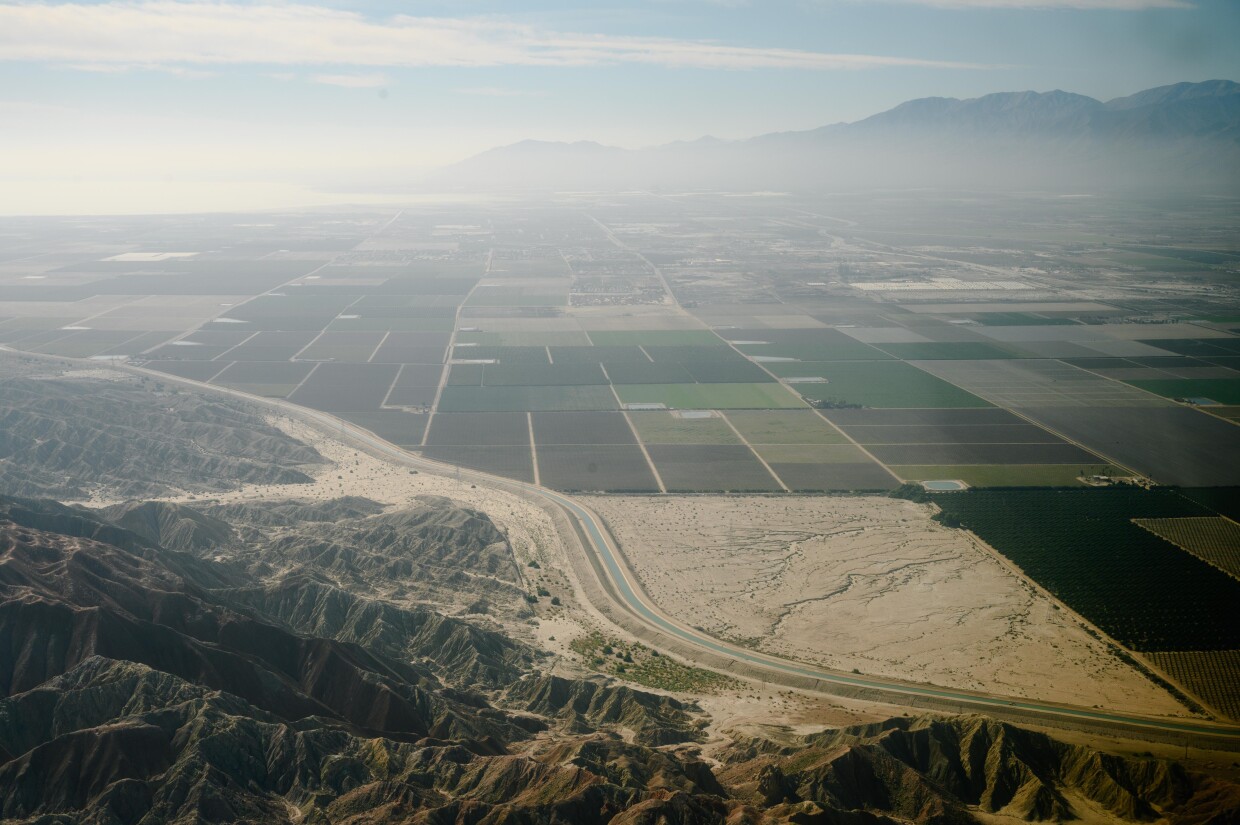On the north edge of the Salton Sea, a movement is gaining steam to create a new national monument that would protect swaths of recreational land used by the valley’s communities of color.
A coalition of environmental groups and tribes, including the Fort Yuma Quechan Indian Tribe, Audubon California, Consejo de Federaciones Mexicanas and the Center for Biological Diversity are urging the federal government to designate large sections of land there with similar protections to national parks.
National monuments are typically shielded from mining and drilling and can also open the door for tribes and federal agencies to work together to manage the land.
The proposed Chuckwalla National Monument would grant some of those protections to around 660,000 acres of federally-owned high desert straddling the Coachella Valley and eastern Imperial County. It reaches from the north edge of the Salton Sea to the winding Colorado River in the southeastern corner of the state. Craggy hillsides, badland canyons and sweeping desert plains are home to wildlife like bighorn sheep, mountain lions, kit foxes and chuckwallas — the stocky North American desert lizard that gives the proposal its name.
The area is also home to a number of recreational areas, including Painted Canyon and Box Canyon in the Mecca Hills preserve and Corn Springs campground.
Environmental advocates said a monument designation would shield fragile ecosystems and historic cultural resources and would help safeguard access to nature, particularly for the region’s Latino and Indigenous residents and other communities of color.
“A lot of the environmental challenges are going to be impacting these communities at a higher level,” said Frank Ruiz, who directs Audubon California’s Salton Sea Program. “We want those people to be at the center stage of the conservation movement.”
The monument would sit on the traditional homelands of the Iviatim, Nüwü, Pipa Aha Macav, Kwatsáan and Maara’yam peoples, according to the coalition’s website.


There are two pathways to creating a new national monument. The most common is through a presidential executive order under the Antiquities Act of 1906. But an act of Congress could also set aside those lands for the Chuckwalla National Monument.
At least one U.S. lawmaker has already proposed a law that could make that happen. In September, U.S. Rep. Raul Ruiz introduced a bill that would create the Chuckwalla monument and add 17,000 acres to Joshua Tree National Park, which sits directly to the north.
Advocates are also asking the Biden administration to consider declaring the monument through an executive order.
“The proposed Chuckwalla National Monument would preserve an important cultural landscape,” said Chairman Thomas Tortez of the Torres Martinez Desert Cahuilla Indians at the White House Tribal Nations Summit in December. “I urge President Biden to use the Antiquities Act to permanently protect these important lands.”
Supporters said a monument declaration could be a chance to restore some tribal oversight of the region. The Biden administration has been making a concerted effort to work together with tribes and create new co-stewardship agreements for federal land. And tribes like the Fort Yuma Quechan Indian Tribe have also urged the government to protect neighboring swaths of land, including the Kw’tsán National Monument.
The Chuckwalla proposal is also part of a growing statewide push to make public lands more accessible for communities of color in particular. Discriminatory laws and racial violence have cut off many Black, Latino and Asian American people from natural areas and instead concentrated pollution and hazards in their neighborhoods.
Some parts of the proposed monument have largely served residents of color for decades. In 1993, a Bureau of Land Management study of the Mecca Hills preserve found that more than three quarters of visitors on holiday weekends identified as Latino.
“It's a really personal campaign,” said Sendy Hernández Orellana Barrows, who serves as conservation program manager for Consejo de Federaciones Mexicanas and grew up in the Coachella Valley. “Making sure that the land that's pretty much in my backyard is protected.”

Supporters say their fight for the monument has also become more urgent as the Salton Sea continues to dry up. The vast inland lake — one of the region’s other major wildlife and recreation hubs — is dwindling because of water use decisions and rising global temperatures.
“The monument, which is just north of the Salton Sea, provides recreation,” said Audubon California’s Ruiz. “Provides other opportunities that the Salton Sea may never be able to provide anymore.”
Rep. Ruiz’s bill is currently under consideration by the House Committee on Natural Resources. The Biden administration has not announced plans to declare the monument through an executive order.





